Author: Will Lovell
Unintentionally developed in the 1840s by Viennese brewer, Anton Dreher, after the malt kilns in his brewery were damaged by a fire, Vienna malt is a pale colored malt that’s kilned at a relatively high temperature, which creates toasty and biscuity characteristics. Brewers in the region began using this unique Vienna malt to make a beer that was generally lighter than what was available at the time, and it came to be known as Vienna Lager.
Around the same period, maltsters in the Bavaria region of Germany were experimenting with new malting methods stemming from technological advancements, one of which involved recirculating the moist air created during the barley drying process rather than drawing it away, then kilning at higher temperatures. This slower malting approach ultimately led to the development of a slightly darker malt that contributed rich malty and biscuity qualities to beer, which brewers and drinkers at the time came to enjoy. When the Munich Malt House opened in 1872, they began producing a consistent and quality version of this eponymously named Munich malt.
As base malts, both Vienna and Munich malts can make up 100% of the grist, as they possess the diastatic power to enzymatically self-convert starches into fermentable sugar. While the descriptions are similar, Munich malt is known to impart a richer flavor and darker color, which was supported by findings in a past xBmt comparing lagers made with either all Vienna malt or all Munich malt. This made me curious if it might be possible to blend Munich and Pilsner malts such that it accurately emulates Vienna malt, so I designed an xBmt to test it out.
| PURPOSE |
To evaluate the differences between a Vienna Lager made with primarily Vienna malt and one made with a blend of Munich and Pilsner malts.
| METHODS |
For this xBmt, I went with a simple Vienna Lager recipe consisting of mostly base malt with a touch of pale chocolate. Whereas one batch was made with Vienna malt, the other was made with a blend of Munich and Pilsner malts to achieve the same color.
Austria-Mexico Line
Recipe Details
| Batch Size | Boil Time | IBU | SRM | Est. OG | Est. FG | ABV |
|---|---|---|---|---|---|---|
| 5.5 gal | 60 min | 26.8 | 10.8 SRM | 1.049 | 1.009 | 5.25 % |
| Actuals | 1.049 | 1.009 | 5.25 % | |||
Fermentables
| Name | Amount | % |
|---|---|---|
| Vienna Malt OR 50/50 Munich I + Pilsner | 11 lbs | 97.78 |
| Pale Chocolate Malt | 4 oz | 2.22 |
Hops
| Name | Amount | Time | Use | Form | Alpha % |
|---|---|---|---|---|---|
| Tettnang | 60 g | 60 min | Boil | Pellet | 2.2 |
| Saaz | 50 g | 15 min | Boil | Pellet | 3.5 |
Yeast
| Name | Lab | Attenuation | Temperature |
|---|---|---|---|
| Que Bueno (L09) | Imperial Yeast | 75% | 46.9°F - 55°F |
Notes
| Water Profile: Ca 60 | Mg 0 | Na 0 | SO4 77 | Cl 50 |
Download
| Download this recipe's BeerXML file |
After collecting identical volumes of RO water and adjusting each to the same desired mineral profile, I set the controllers on my Delta Brewing AIO units to heat them up then weighed out and milled the grains.
Once the water for each batch was adequately heated, I incorporated the grains then checked to make sure both were at the same target mash temperature.
I set the controllers on my set to maintain the mash temperature and stirred each one at the same intervals to ensure consistent conversion.
While the mashes were resting, I prepared the kettle hop additions.
Once each 60 minute mash was complete, I sparged to collect the same pre-boil volume then boiled the worts for 60 minutes before chilling them with my JaDeD Brewing Hydra IC.
Refractometer readings showed both worts achieved the same target OG
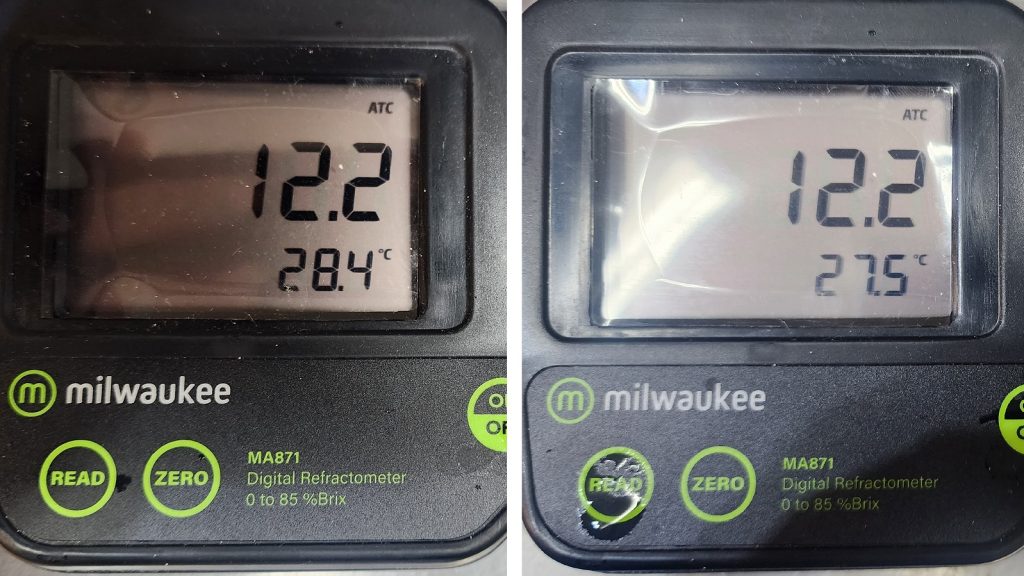
After transferring identical volumes of wort to separate Kegmenters, they were placed in my chamber and left to finish chilling to my desired fermentation temperature of 66°F/19°C for a few hours before I pitched a pouch of Imperial Yeast L09 Que Bueno into each.
After a week, I raised the temperature in the chamber to 70°F/21°C and let the beers sit for an additional week before taking hydrometer measurements showing the Vienna malt beer finished with a slightly lower FG than the beer made with a blend of Munich and Pilsner malts.
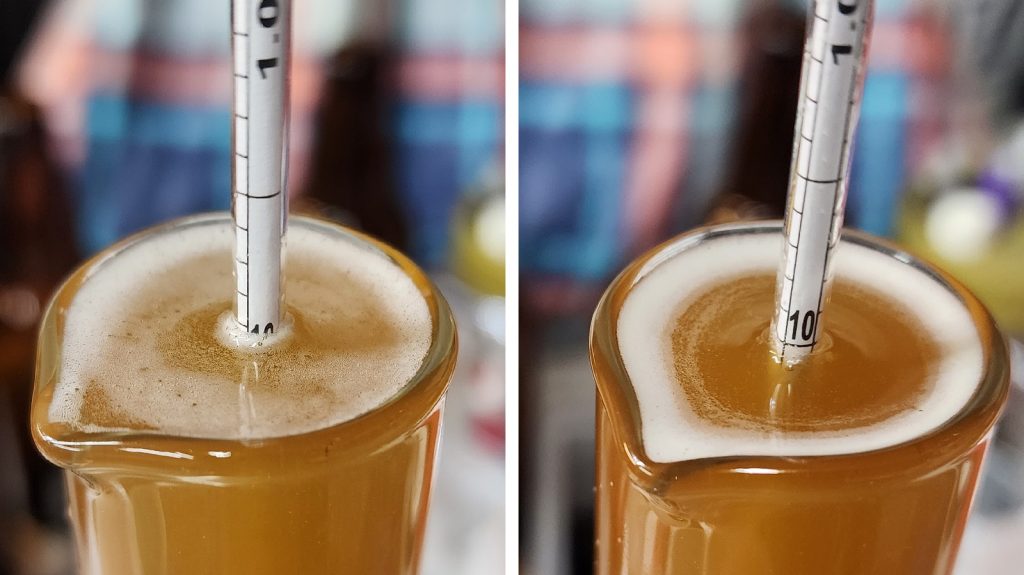
At this point, I racked the beers to sanitized kegs that were placed in my keezer and left on gas for 4 weeks before they were ready for evaluation.
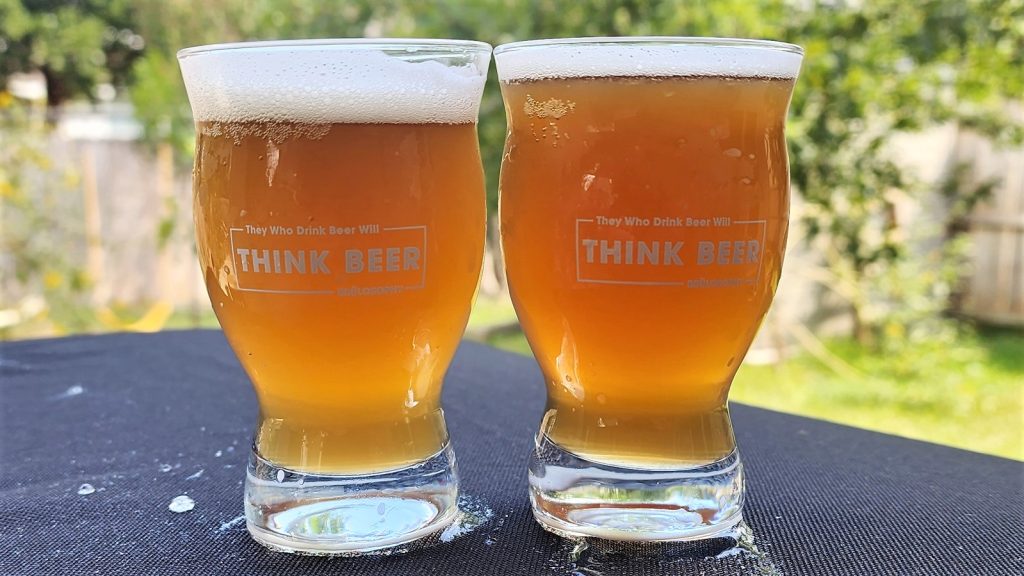
| RESULTS |
A total of 23 people of varying levels of experience participated in this xBmt. Each participant was served 2 samples of the beer made with Vienna malt and 1 sample of the beer made with a blend of Munich and Pilsner malts in different colored opaque cups then asked to identify the unique sample. While 12 tasters (p<0.05) would have had to accurately identify the unique sample in order to reach statistical significance, only 7 did (p=0.69), indicating participants in this xBmt were unable to reliably distinguish a Vienna Lager made with Vienna malt from one made with a blend of Munich and Pilsner malts.
My Impressions: Out of the 5 semi-blind triangle tests I attempted, I correctly identified the odd-beer-out just 1 time, and that was admittedly a lucky guess. While I noticed the Vienna malt beer was ever so slightly lighter in color than the one made with a malt blend, they were otherwise perceptible identical. I really enjoyed the malt aroma and subtle sweetness of these beers!
| DISCUSSION |
Vienna malt is a base malt that has seen increased usage in a variety of beers, though is perhaps best known as the primary malt used to produce Vienna lager, whereas Munich malt is a quintessential ingredient in German Märzen. While both are known to impart toasty and biscuity characteristics, Vienna malt is slightly paler and less rich than Munich malt. Interestingly, tasters in this xBmt were unable to unable to reliably distinguish a Vienna Lager made with Vienna malt from one made with a blend of Munich and Pilsner malts.
A plausible explanation for these results is that the richness of Munich malt can be tamed by blending it with Pilsner malt such that it decently replicates Vienna malt characteristics. However, some other factor may have been responsible for tasters being unable to tell these beers apart. For example, the use of pale chocolate malt could have minimized the perceptible differences, though at just 2% of the grain bill, this seems unlikely.
Having used both malts extensively over the years, these results weren’t terribly surprising to me, as I’ve always viewed Munich malt as being a richer version of Vienna malt. That being the case, it makes sense that blending Munich malt with Pilsner malt to achieve a similar color would create a passable Vienna malt analogue, which a prior TBC xBmt supported as well. While I don’t plan to make any changes as a function of these findings, it’s nice to know I can likely get away with such a blend should I be out of Vienna malt.
If you have any thoughts about this xBmt, please do not hesitate to share in the comments section below!
Support Brülosophy In Style!
All designs are available in various colors and sizes on Amazon!
Follow Brülosophy on:
FACEBOOK | TWITTER | INSTAGRAM
If you enjoy this stuff and feel compelled to support Brulosophy.com, please check out the Support page for details on how you can very easily do so. Thanks!


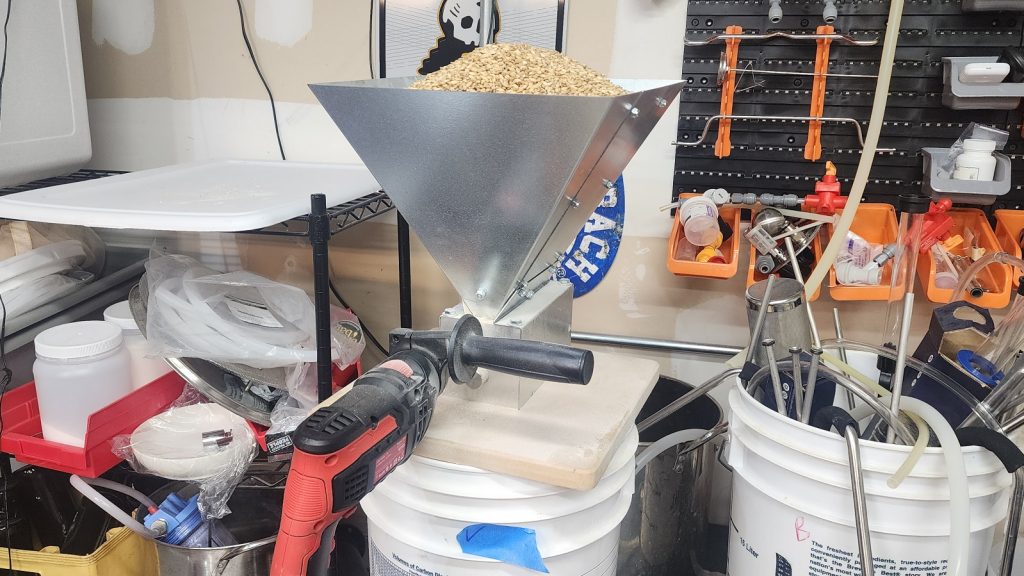
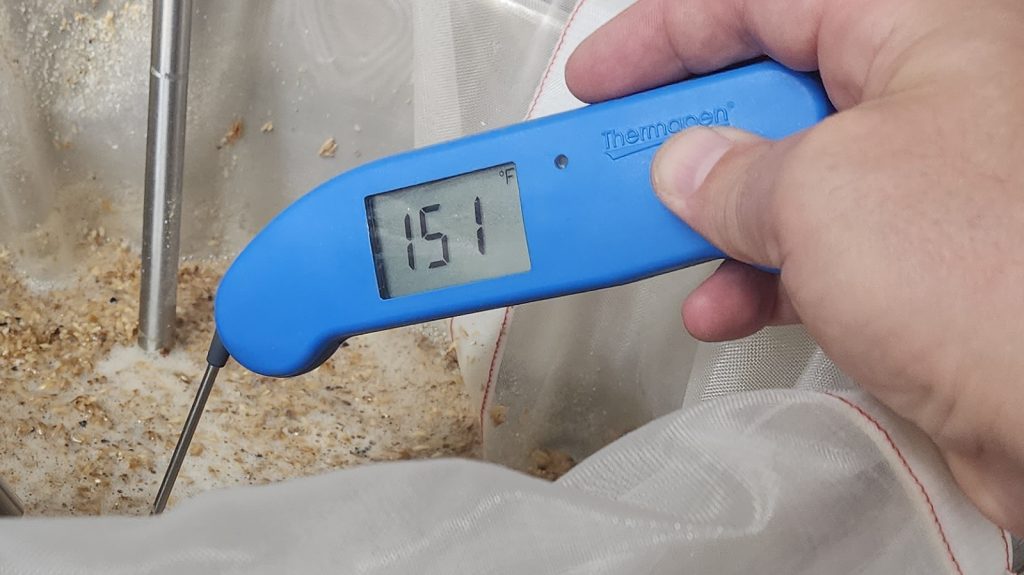
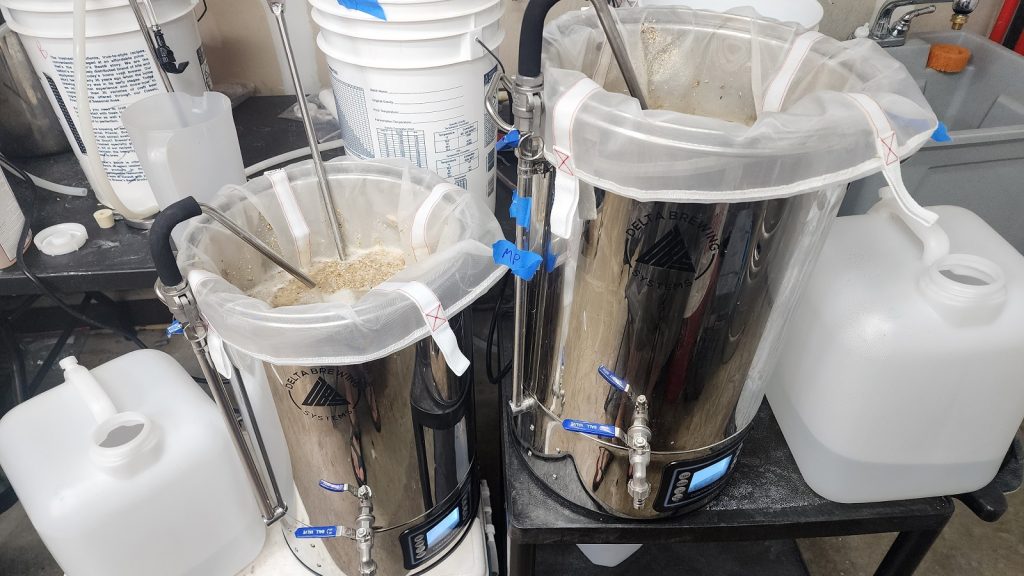
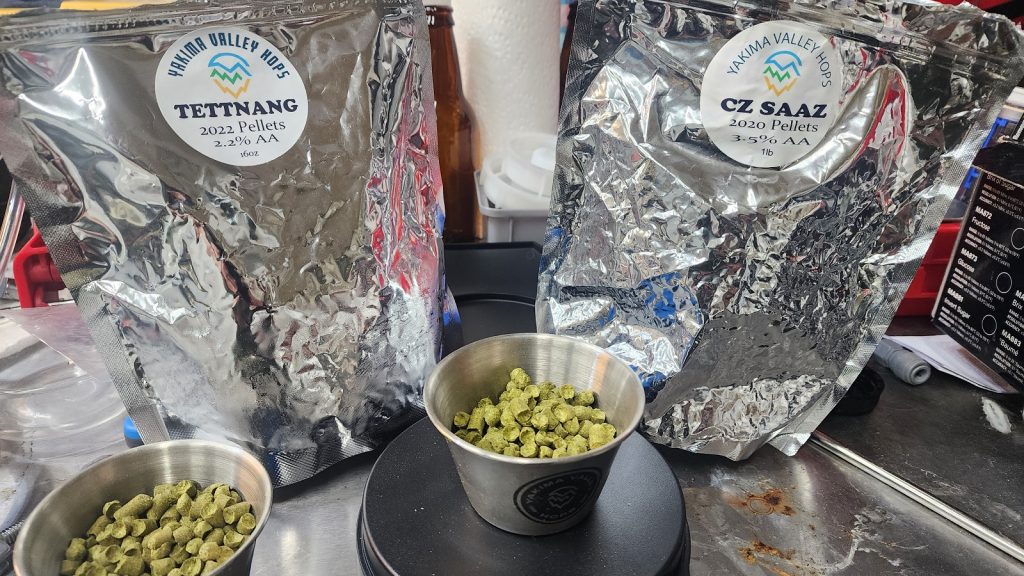
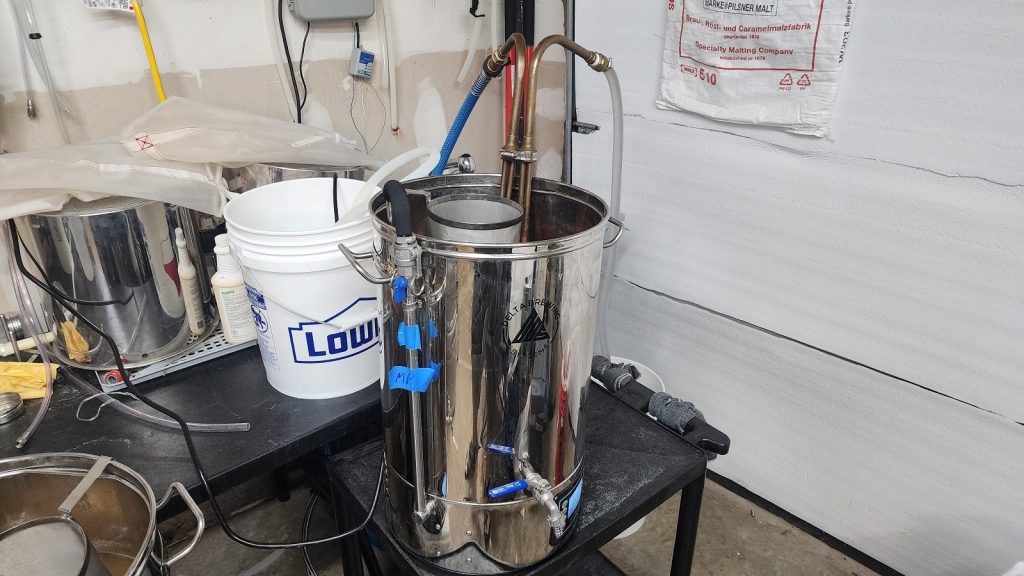
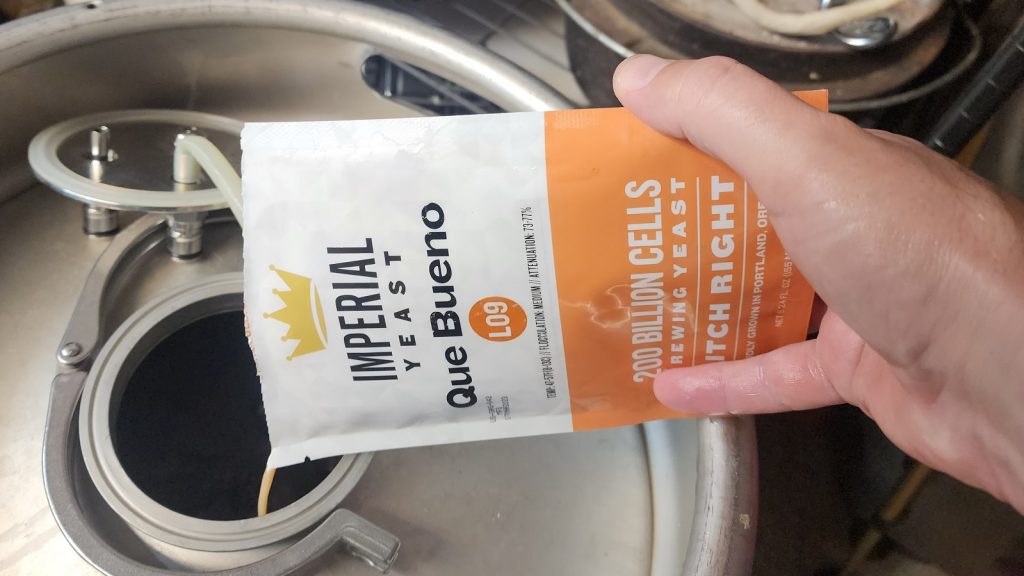











14 thoughts on “exBEERiment | Vienna Malt vs. Munich/Pilsner Malt Blend In A Vienna Lager”
What maltster? I’ve been told (but don’t know if it’s true) that Weyermann’s Vienna is just a blend of their Pilsner and light Munich.
I used Weyermann for all the base malts. I have no clue if that rumor is true or not but have heard similar claims. Regardless, it appears that based on these findings, using 50/50 Munich and Pils is an OK substitute for Vienna malt.
Thanks for bring clarity to another challenge of having the correct malts on hand. I appreciate your ongoing research to make me a better brewer! (This year is Number 52 for me brewing)
Nice one, Norm… that’s fantastic.
This is year 52 of me being on the planet!
Which Munich? 1 or 2? 2 is the darker one
Munich I. I don’t think Munich II would work well for this xBmt as it has a lot more character than I, but maybe if we did a 25%? Might be worth exploring.
I’ve often made my Vienna lagers with Munich II and Pilsner.
Even if you get the colour matched, the Munich II version still has a noticeable and distinct ‘bite’ to it. It’s the extra (burnt) toast flavour that gives it some more depth, a bit like increasing the chocolate malt addition.
I really like it, but it’s probably not everyone’s idea of what Vienna lager should be.
Love you guys and love what you do! Looks like a solid amber lager.
But wait… why the pale chocolate? You mention Anton Dreher inventing the style, and his recipe is well known: 100% Vienna malt and Saaz hops. Also isn’t pale chocolate from the UK? You can of course make a great amber lager with pale chocolate, but why call it a Vienna lager when the definition is already established?
But besides all the traditionalism, isn’t the pale chocolate a potential confounding variable? Or at the very least a distraction or noise in the measurement?
This is just my house Vienna lager recipe and something I don’t mind having 10 gallons of on Tap. While a fair critique, the pale chocolate makes up 2.2% of the grist and is not very likely to be the reason this came back non-significant. I don’t even think this recipe is that far out there as I’ve seen a few Vienna lager recipes that use Maris Otter and Chocolate malt in conjunction with either Munich and/or Vienna malt.
If you would like to repeat the xbmt with the recipe you described above, shoot me an e-mail and I can send you the requirement’s for the TBC xBmt Series and get your results published on the site.
I can’t even read through this diarrhea of advertising on mobile. Use some of that hot patreon money to de-advertise yourself.
Hi Christine, we certainly appreciate your eloquent comment. While our “patreon money” certainly doesn’t qualify as “hot,” we did recently discover that Google was automatically running advertising experiments, which resulted in very intrusive vignette ads being displayed. That should be turned off now… but there will still be other less intrusive ads. Nature of the beast, I suppose.
Adding rye to this experiment, what could we expect from each batch?
Solid experiment, I’ve heard the rumors and have been meaning to test it myself for years. Good write-up. Appreciate what y’all do.
Another way to check this experiment. Chew/eat some vienna and the 50/50 blend. How do they compare ?